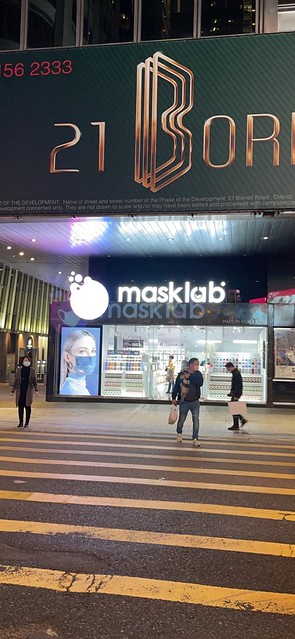The fractured tech lobby’s uphill battles – Axios – The fractured tech lobby is a sign of too many firms working at cross purposes. – The Internet Association was founded almost a decade ago to be Silicon Valley’s voice in Washington. But now its biggest members — companies like Facebook, Google and Amazon — increasingly bump heads as they each seek to channel policymakers’ fury away from themselves, and they can have wildly different goals from smaller members. Facebook, for instance, has signaled that it’s open to new federal laws introducing privacy regulations and modest updates to Section 230, tech’s liability shield. Smaller companies worry giants could handle the burden of complying while they’d struggle to survive. – The fractured tech lobby is going to offer a bounty for law firms and K Street lobbyists. It will also open up investigations around the world from the EU to Seoul, Korea. China won’t be involved since it blocks most of the key members of the Internet Association – the fractured tech lobby in question.
The Kremlin’s Anti-Western (and Remarkably Successful) Middle East Media Project | Interpreter magazine – Dr. Naila Hamdy, an associate professor of journalism and mass communication at the American University in Cairo, noted how “RT may have filled up that gap” left in Egypt and the wider region following the Arab Spring, when an increasing number of viewers began to see Al-Jazeera as closely affiliated with the Muslim Brotherhood and other Islamist parties. This increasing regional polarization erupted in the summer of 2017 with the Saudi-led embargo of Qatar, with Saudi and its Gulf Cooperation Council (GCC) partners demanding the closure of Al Jazeera as punishment for Qatar’s alleged support for the Brotherhood, as well as Iran and its regional Shiite proxies
The Radicalization of Kevin Greeson — ProPublica – interesting article and an under-covered subject. The flpside of this article is how the Democrats have lost their base in these communities and it reminds me a lot of how Labour lost its base outside the major cities in that respect. They no longer represent working people, but are instead considered to be playing identity politics, the economics of new-liberalism is largely universal
China’s rich spent US$54 billion at home on luxury goods last year with coronavirus halting overseas trips | South China Morning Post
From Dialect to Grapholect: Written Cantonese from a folkloristic Viewpoint by Chin Wan-kan Hong Kong Policy Research Institute Ltd. – fascinating white paper on Cantonese culture and language. What becomes apparent is that Beijing’s adoption of Mandarin demonstrates its inability to decolonise its culture, by taking the language of the Manchu people who conquered the Han people and others. (PDF) More China related content here.
Sony takes wraps off secret Unreal Engine project, unveils new subsidiary: Sony Immersive Music Studios – Music Business Worldwide
Unilever workers will never return to desks full-time, says boss | Working from home | The Guardian – to be honest with you, this was the way Unilever operated with its hot desking policies way before COVID-19. Global headquarters 100VE had way less seats, phones, desk space and meeting rooms than were needed
Xi encourages Starbucks to help promote China-U.S. ties – Xinhua | English.news.cn – one has to ask where is the line that executives from businesses like Starbucks and Goldman Sachs cross to be viewed as foreign agents in the US due to their relationship with the Chinese government
Sheryl Sandberg downplayed Facebook’s blame for Capitol riot, but evidence points to role – The Washington Post – Fliers and hashtags promoting the pro-Trump rally circulated on Facebook and Instagram in the days and weeks beforehand
Ad Aged: Standing up for truth. (Haha.) – For a society or an industry to function it needs to have a set of common facts. It’s really that simple. If you hear an assertion, ask for evidence. Whether or not you agree with it. If you make an assertion, be prepared to back it up with a piece of paper.
WhatsApp fights back as users flee to Signal and Telegram | Financial Times – The encrypted messaging app, which has more than 2bn users globally, and several of its senior executives spent Tuesday trying to clarify forthcoming privacy policy changes covering the data that can be shared between WhatsApp and its parent now that it is deepening its push into ecommerce. Signal was downloaded 8.8m times worldwide in the week after the WhatsApp changes were first announced on January 4, versus 246,000 times the week before, according to data from Sensor Tower. The app also got a boost when Elon Musk, the chief executive of Tesla, tweeted “Use Signal” on January 7. By contrast, WhatsApp recorded 9.7m downloads in the week after the announcement, compared with 11.3m before, a 14 per cent decrease
Detained US lawyer urges Hong Kong to look to Ireland for inspiration | Financial Times – Look at Irish history . . . They were completely hopeless for so long, but eventually they got part of Ireland — they got a republic,” Mr Clancey told the Financial Times. “In a difficult situation we shouldn’t just give up and have no hope for the future.” Mr Clancey was still asleep when police arrived to detain him last Wednesday. After his arrest, police escorted Mr Clancey, a Hong Kong permanent resident, to his office to conduct a search. His firm, headed by veteran lawyer Albert Ho, is known for representing anti-government activists. His arrest has stirred fears authorities will target lawyers in Hong Kong who represent opposition figures in political cases — a tactic common in mainland China
Chinese freight platform to raise more cash on huge investor demand | Financial Times – investor frenzy bidding seven times the amount that Didi Chuxing was looking for when doing a capital round for its freight business


